These horse heads are very well known in Scotland: the Kelpies of Fallkirk. But what are Kelpies and where is Fallkirk? Find out more in this article…
Page Contents (click line to jump the text)
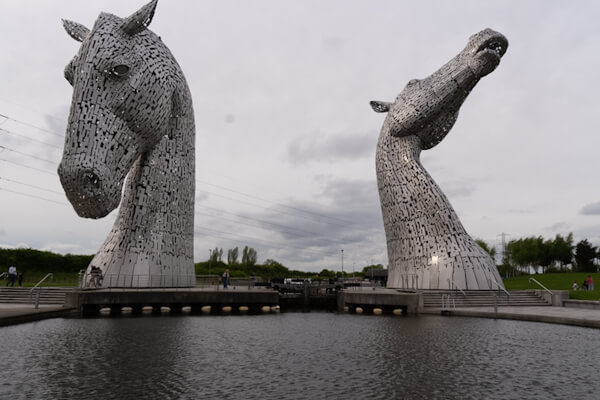
Intro and travel report
During our nearly three-week trip through Scotland in our motorhome, we also took a detour to Fallkirk. I mainly wanted to photograph the Kelpies, and thus the Fallkirk wheel.
Fallkirk is located in the triangle between Edinburgh, Glasgow and Stirling. It is a modern, medium-sized town with a surprising amount of traffic!
As I steer our motorhome through the surprisingly heavy traffic, I notice lots of signs pointing to all kinds of sights that Fallkirk apparently has to offer.
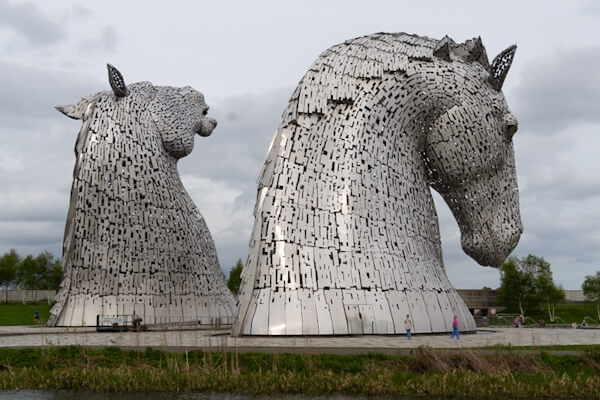
The Kelpies and the Wheel are also well signposted. Then there is an old fort and a small, older town centre, which my wife took a closer look at – and was pleased with.
We first drive to the Kelpies: giant horse heads located right next to the M9, a motorway that cuts through Fallkirk from north to south.
The car park is large and inviting and has plenty of space for motorhomes. The location next to the motorway is actually less disruptive than I thought, as it is higher up and not too much traffic noise penetrates the park surrounding the Kelpies.
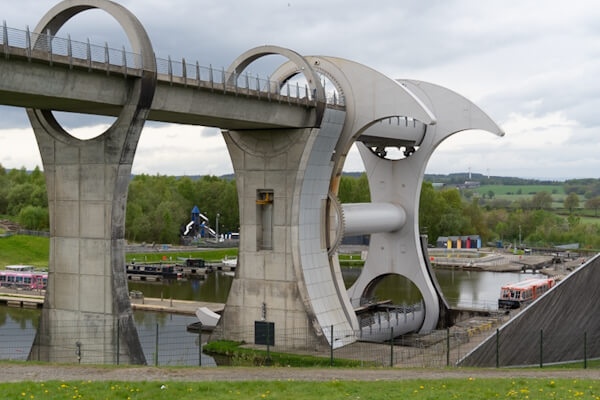
There is a small canal, which is also a walking and cycling path, and we approach the Kelpies on its banks. The canal is narrow and idyllic. A few narrowboats are moored here.
In the past, these narrow cargo ships transported all kinds of cargo through the narrow canals across the country, but today they have been converted into houseboats. There are small wooden locks that are operated by hand and a small harbour for boats right next to the Kelpies.
The huge horse heads can be seen from afar and are extremely impressive. But it is not only their size that is impressive, but also their shape.
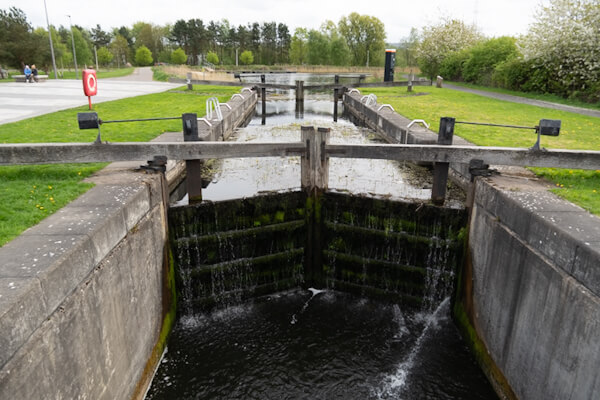
They seem to emerge from the small lake directly in front of them in a very lifelike manner. The small lake is also part of the canal that connects the small harbour with the nearby River Carron.
We walk around the park and the statues, treat ourselves to another ice cream and stroll leisurely back to our motorhome to continue our journey.
There is also a visitor centre with a café, shop and exhibition, which are certainly nice. However, we only walked past it. See also: https://www.thehelix.co.uk.
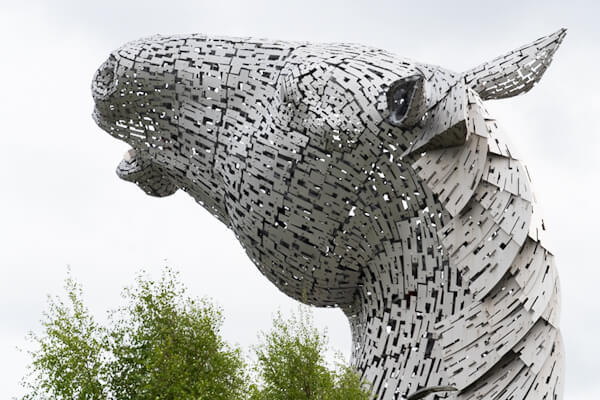
A few minutes’ drive further on, we come to the Wheel. This is a ship lift that is unique in the world, as a rotating wheel transports ships from a higher level to a significantly lower level – or vice versa.
The difference in height is much greater than in a normal lock, but the task is the same: to bridge differences in height between canals and rivers for ships.
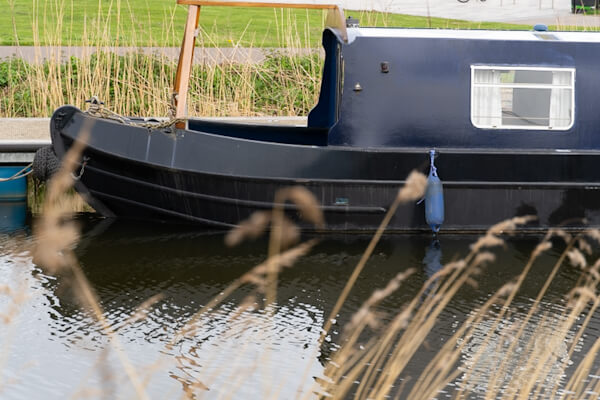
Unfortunately, we are already too late; the wheel is closed and stationary. Never mind, I’ll quickly take a few photos and have a look at the facility. There is also a boat tour that takes you up the wheel and back to the starting point. See also: https://www.scottishcanals.co.uk/visit/canals/visit-the-forth-clyde-canal/attractions/the-falkirk-wheel.
A masterpiece of hydraulic engineering – really cool!
We leave Fallkirk and continue our journey to Stirling, where we have also found a nice campsite.
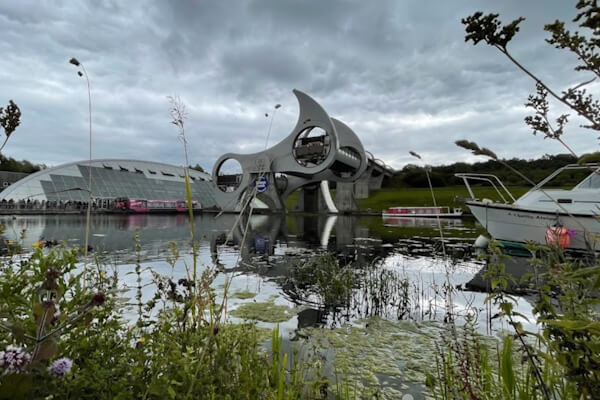
Brief background information on the Fallkirk Kelpies
The Kelpies are two 30-metre-high horse head sculptures in Falkirk, completed in 2013 and opened in 2014.
They were designed by artist Andy Scott and are reminiscent of both the mythical water creatures of Scottish folklore and the working horses that once shaped the region’s canals and industry.
As part of the landscape project ‘The Helix’, they embody the cultural heritage of the region and are now an impressive tourist attraction.
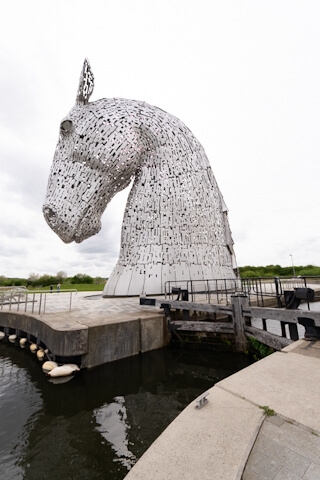
What are Kelpies?
Kelpies are shape-shifters from Scottish folklore that usually appear in the form of horses. They are said to live in rivers and lakes and lure people into the water, but in some traditions they can also take on human form to remain undetected among humans.

Why do horses live in water? In other mythologies, the white caps of waves are often depicted as galloping horses, which may be where the reference comes from.
There are numerous kelpie legends from the early Scottish Middle Ages. The stories may be a warning about the dangers of deep waters.
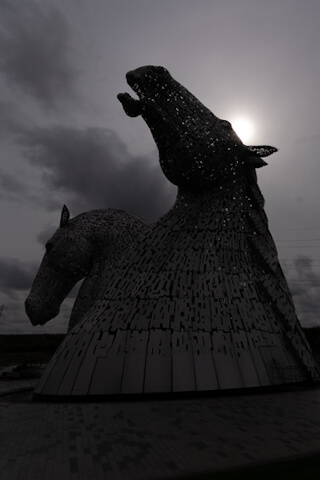
Brief background to Fallkirk Wheel
The Falkirk Wheel is a rotating ship lift near Falkirk in Scotland. It connects the Union Canal with the Forth & Clyde Canal, which were important waterways in the 18th and 19th centuries.
After the original lock system fell into disrepair in the 1930s, a modern solution was sought in the 1990s as part of the Millennium Link project to make the canals navigable again.
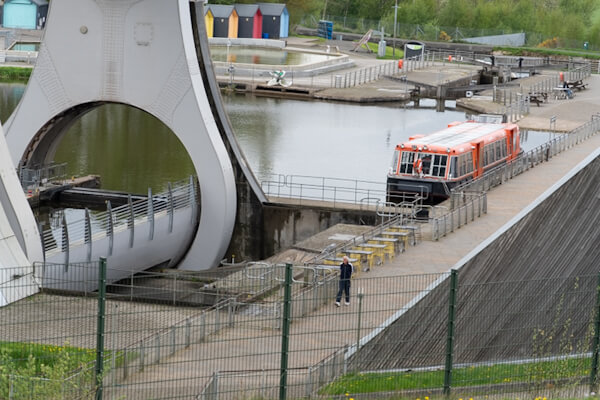
The Wheel lifts boats over approximately 24 metres and was opened in 2002. It is a technical landmark and an important attraction for Fallkirk and the region.
Conclusion
Fallkirk is practically on the way from Edinburgh to Stirling. So it’s easy and convenient to visit these two attractions in Fallkirk on the way.
Is the town worth a longer stay? Well, as a modern town with a lot of traffic, I don’t think so. Continue on to Stirling and stay there for a night or two, which I’m sure you’ll enjoy more.
But the Kelpies and the Wheel are definitely worth a quick visit.
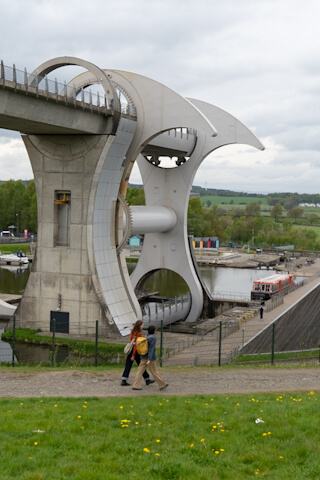
More interesting articles for you
WHY STIRLING KEEPS DRAWING US BACK
ON THE EDGE: DUNNOTTAR CASTLE
MAGICAL GLENCOE VALLEY
Image credits Cover image: Fallkirk Kelpies on the canal (Photo: Ulrich Knüppel-Gertberg)